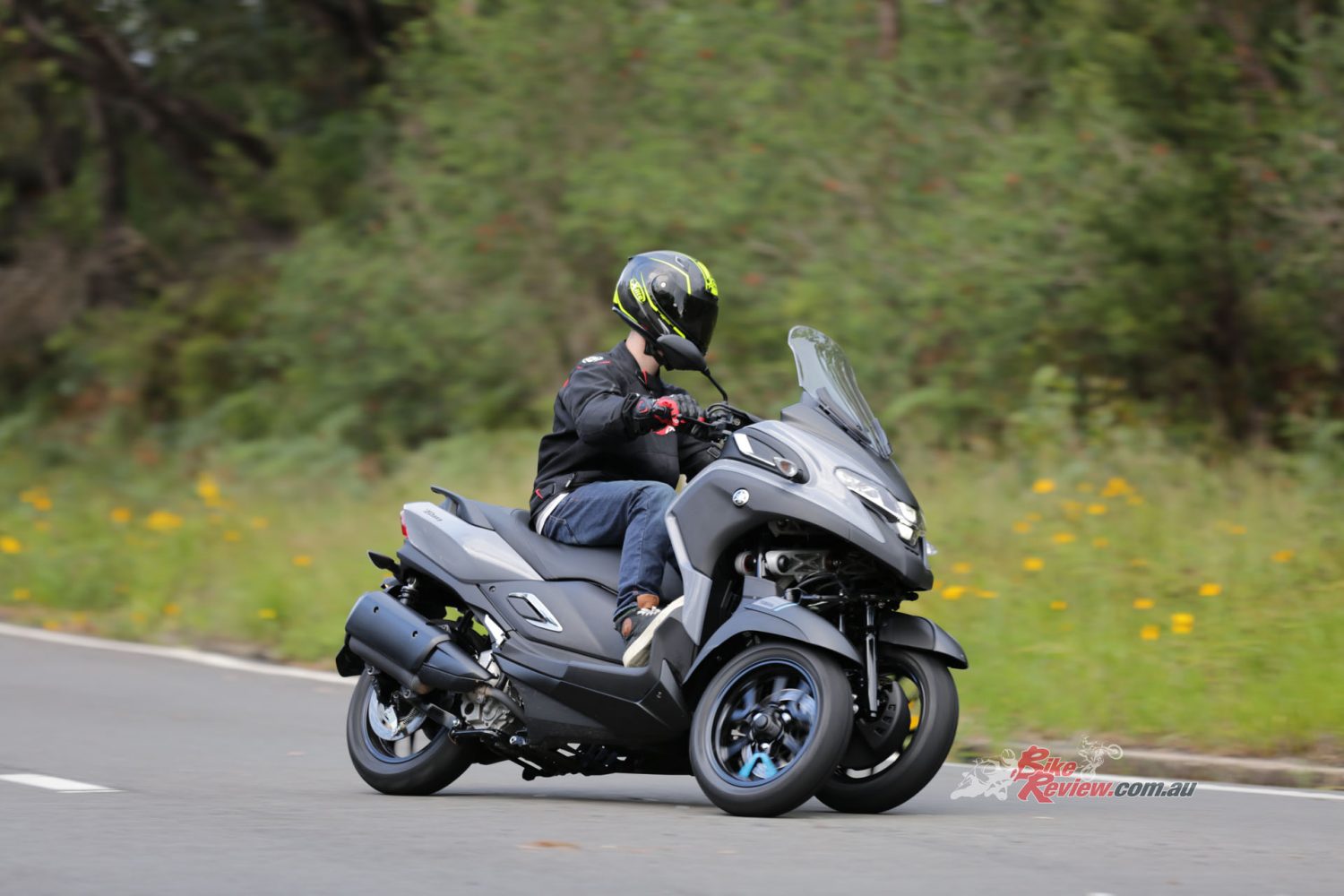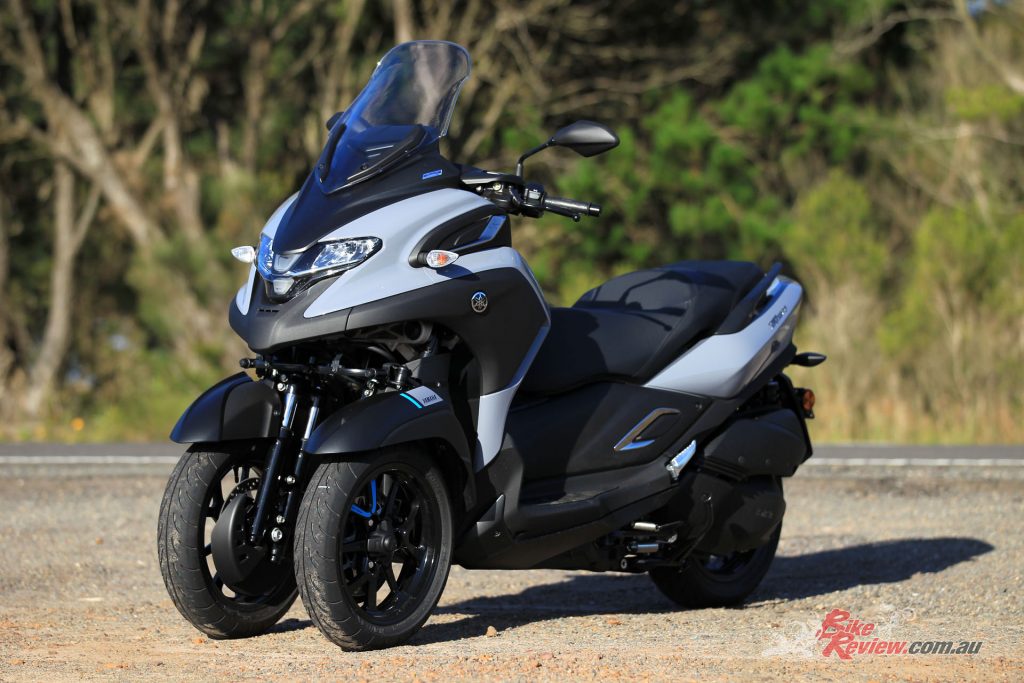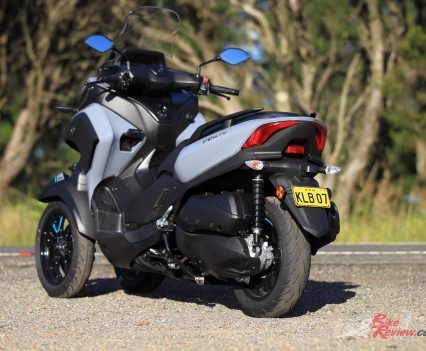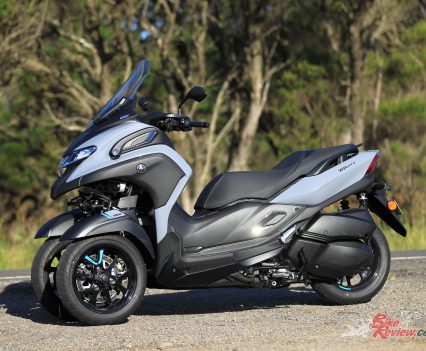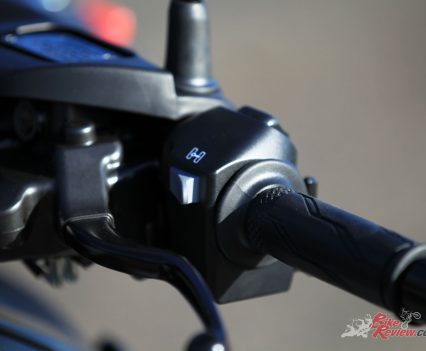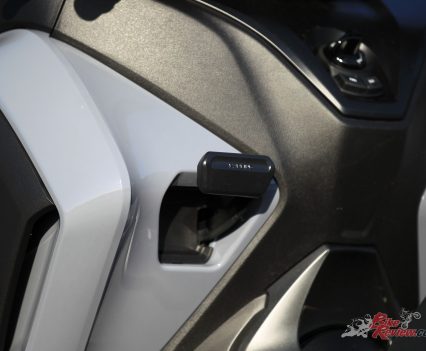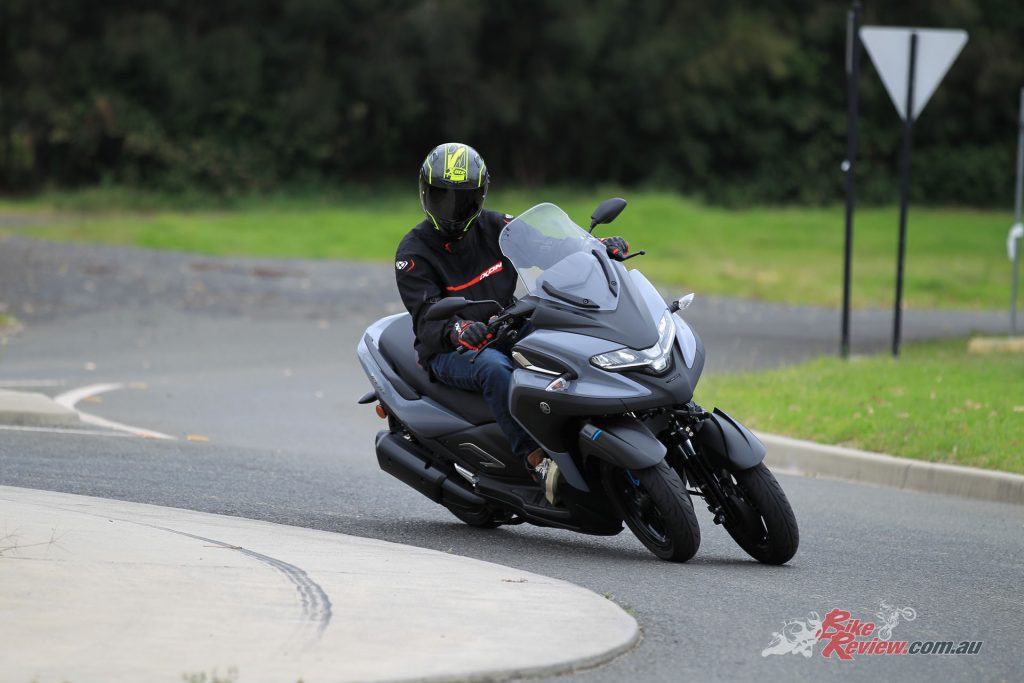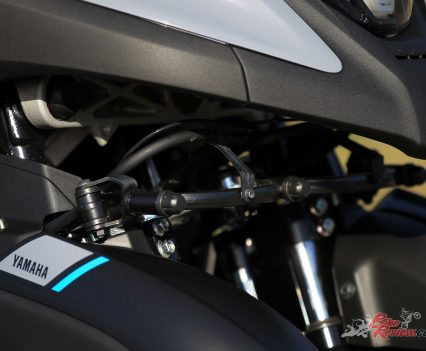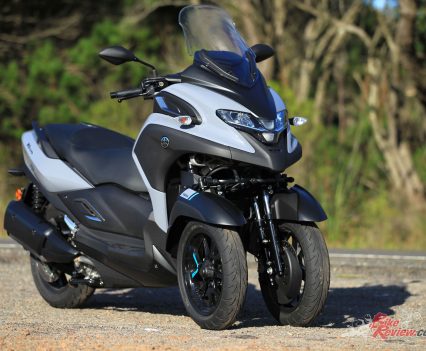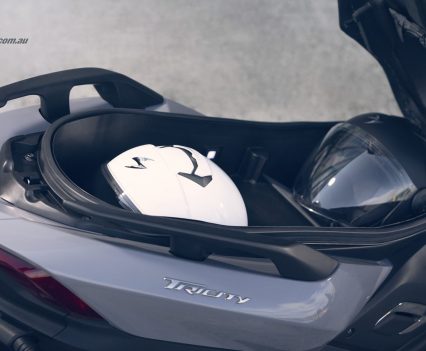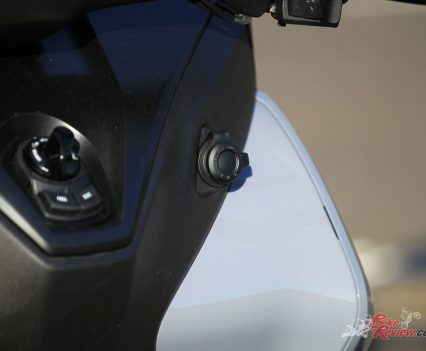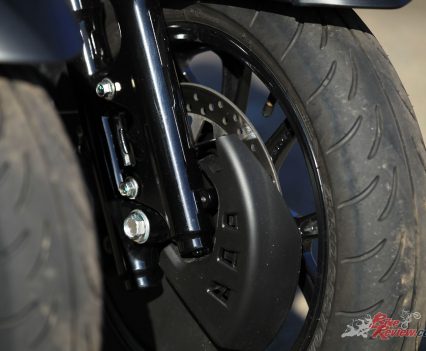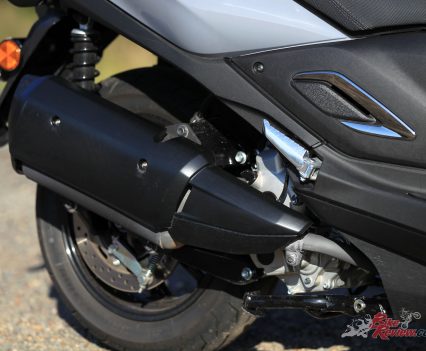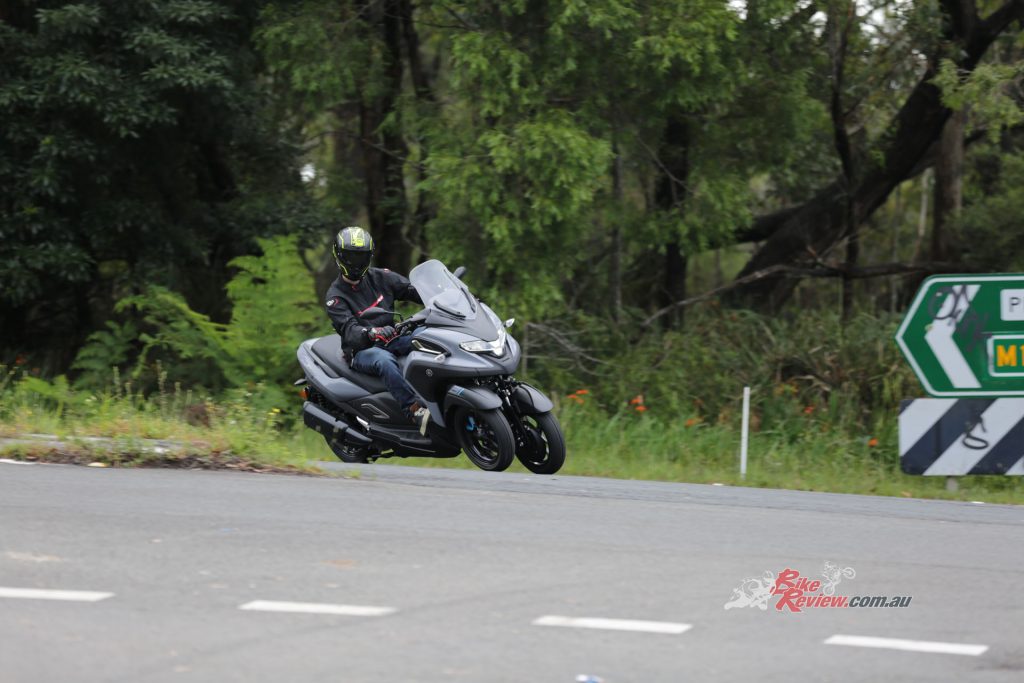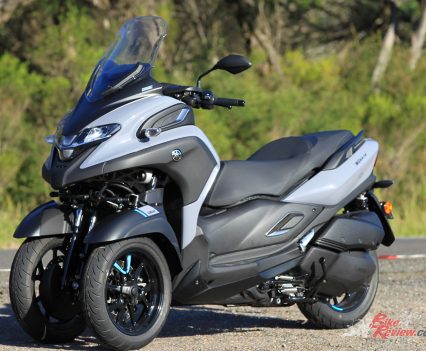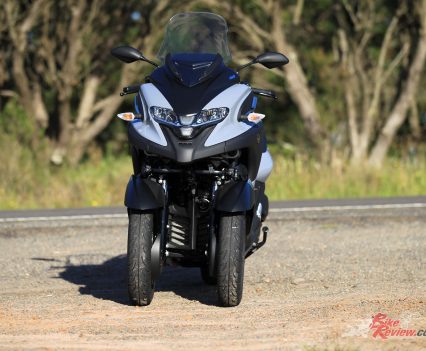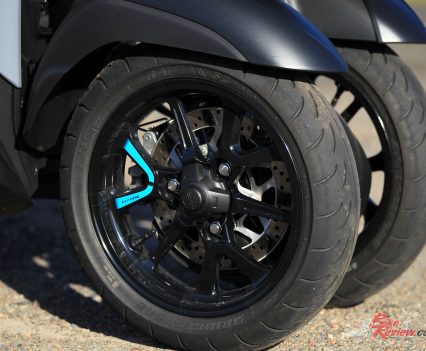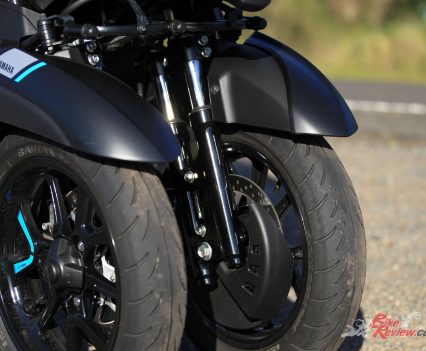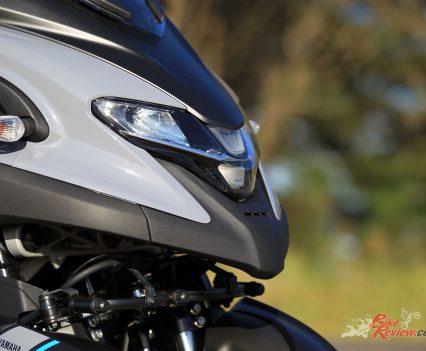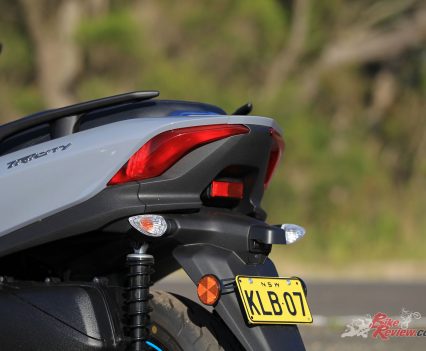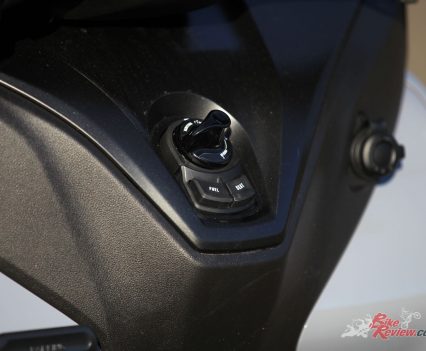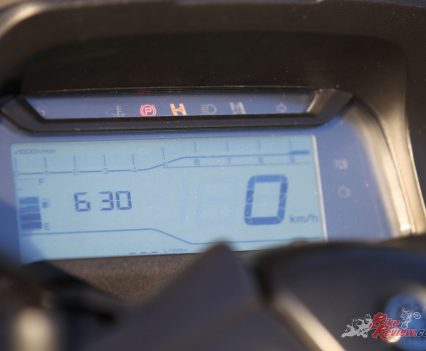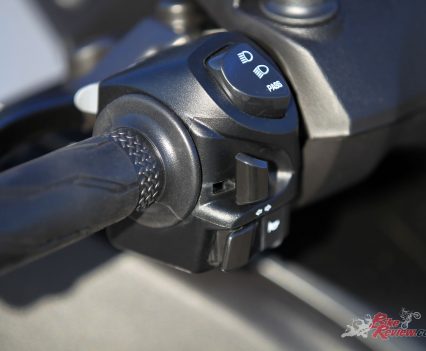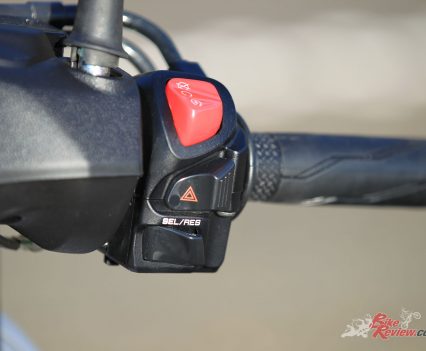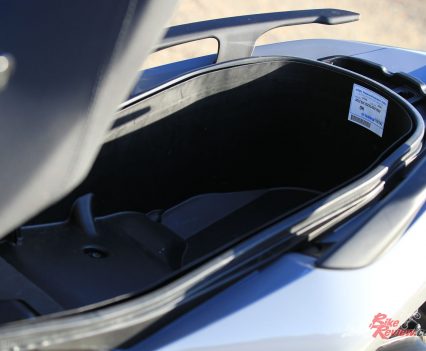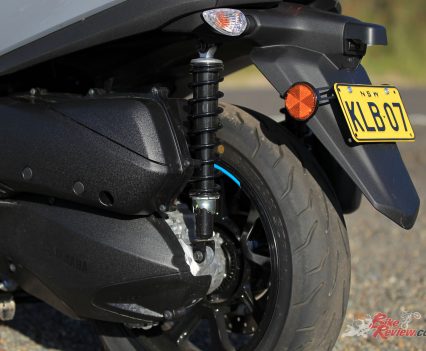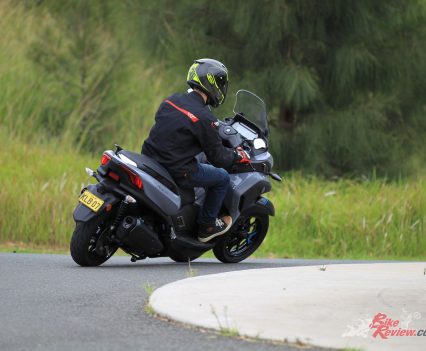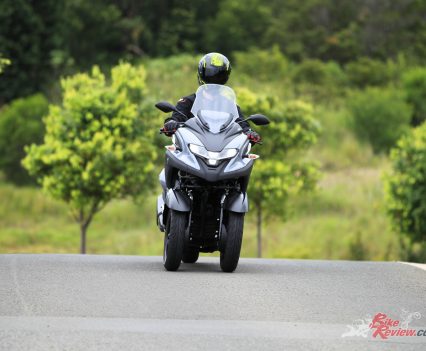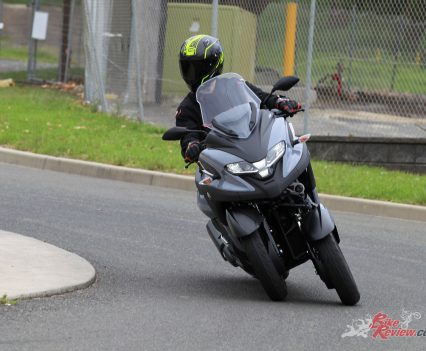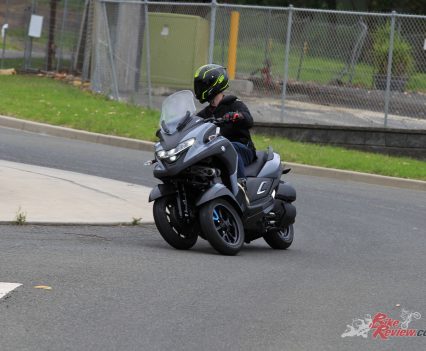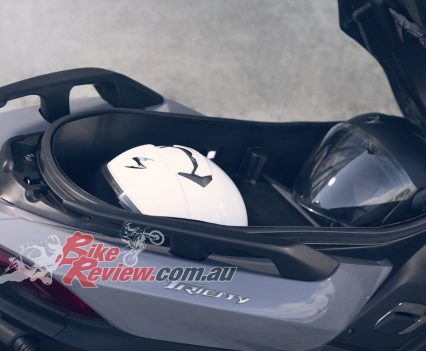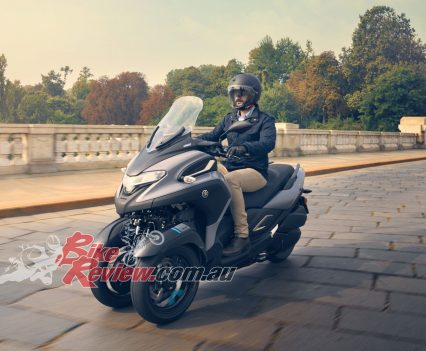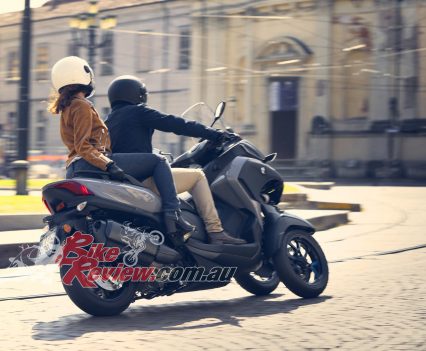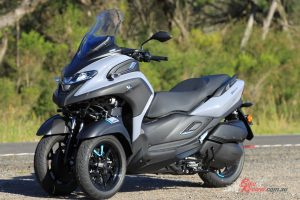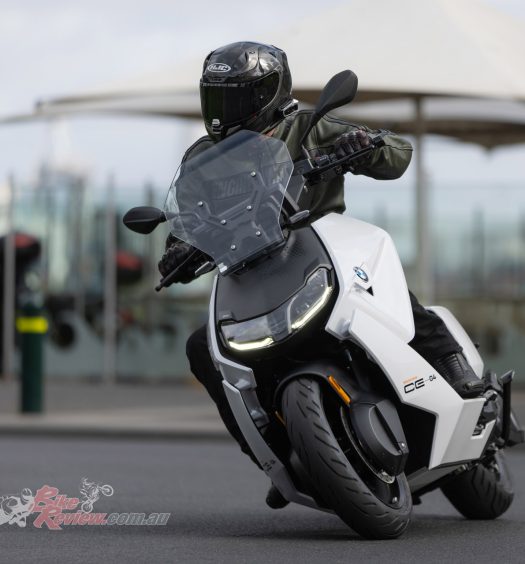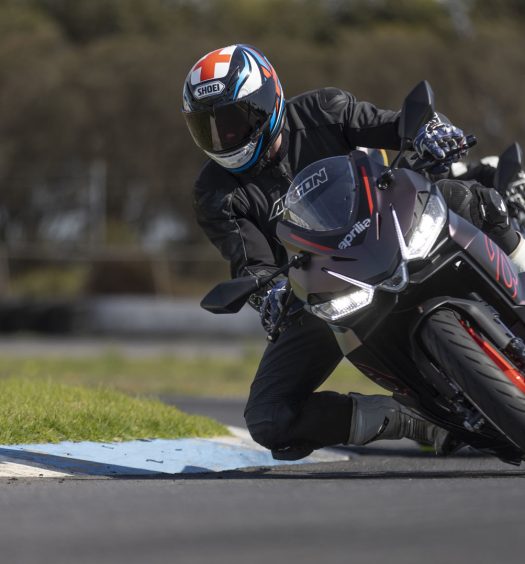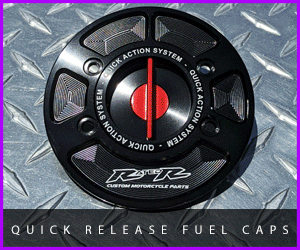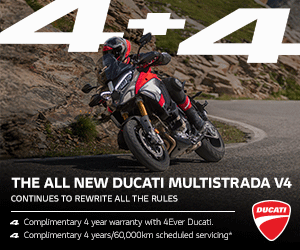The Yamaha Tricity 300 is based on the XMAX 300 platform with the addition of an Ackerman front-end. So how does it compare to the two-wheeled sibling? Review & Pics: Zane Dobie
A while ago, we saw the wacky Yamaha Niken arrive into the motorcycle scene to confuse us with its purpose and where it really belongs. The three wheel trend is here to stay as Yamaha has updated the Tricity line-up with a 300cc model. But does it work on our roads?
Whilst our roads are full of motorcycles, I am yet to see a rider upon a Yamaha Niken or any three-wheel bike besides the Can-Am range and those weird custom Harley trikes. It’s a strange phenomenon that I haven’t quite wrapped my head around as in theory it seems like a great idea, so I thought I would have to give one a go.
I have ridden a few three-wheeled bikes in the past including the old Tricity 155, the Piaggio MP3 and a few Can-Am Rykers. I can appreciate the appeal behind wanting to have a bike that allows the modern-day car driver to change from their petrol guzzling box to something smaller and more eco-friendly like a scooter, but it’s an odd way to go about it.
Check out our other scooter reviews here….
Yamaha’s front wheel technology is described as “Leaning Multi Wheel”. A system for new scooter riders designed to offer a higher level of grip as well as inspire confidence in riding. The three-wheel system has not been constructed to help new riders stay balanced and up-right as the “standing assist” does not activate until the Tricity is travelling below 10km/h. I assumed that this would be the main focus of the bike due to its target market, but the extra wheel is there to create an effect of greater front-end grip and increased stability.
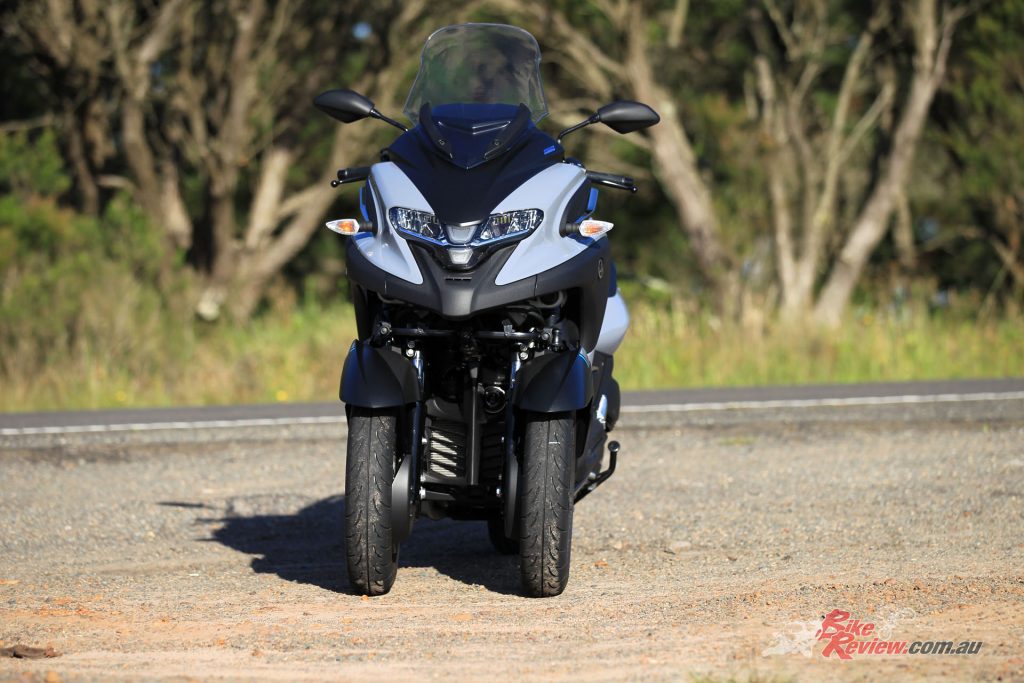
The Tricity can stand up straight without the need to put the side stand down unlike the Niken and Niken GT.
The “Standing Assist” can be used while riding but there are a few issues. When engaging the assist while coming to a halt, the steering becomes super heavy all of a sudden, and if the ‘bars are not pointing straight ahead, the scooter will just end up veering out of the lane. Also, if the standing assist is locked and on an uneven surface or the bike is too leaned to one side, it will fall over.
I have heard stories of them falling over while being wheeled on uneven surfaces, because it still has a single rear wheel, it just wants to tip over whilst activated. It is very easy to switch the standing assist off, with a twist the throttle, it beeps and away you go. After a while of engaging and disengaging the “Standing Assist”, I ended up riding the Tricity 300 like a normal scooter. I even found myself not using it when parking with just flicking the stand down instead.
The Tricity does have a handbrake to stop it from rolling away while using the standing assist. Interestingly, it will allow you to ride off with it on. This was something I looked out for, after a stack on a Piaggio MP3 after riding off on wet grass with the handbrake on. I thought there could be a fail-safe system to stop the Tricity 300 from the same fate but unfortunately there wasn’t.
The under-seat storage is terrific, it’s a feature I wish could be added to modern day motorcycles…
On the road the Tricity 300 is definitely a comfortable ride, the Ackerman front suspension has been set up with forks on each wheel, totalling to four shocks up front. Compared to the XMAX 300, this allows for a more supportive and stable ride, as well as a noticeable difference in the confidence of the machine while leaning it over in the corners.
There was some rear suspension discomfort when riding. Same as the XMAX 300, the two rear shocks lack front-end upgrades in terms of rebound and stiffness. The rear suspension was unforgiving over bumps and potholes on the road.
Check out our guide on passing your M.O.S.T exam here….
Unlike like the Can-Am Ryker, which is impossible to compete your M.O.S.T exam on the Tricity is made with first time riders in mind. It is agile enough to do the tight twist and turns during the exam. However, due to the weight and width, I would recommend a conventional two-wheel scooter for the exam as there are some extremely tight spots.
The extra weight of the double wheel setup at the front is extremely noticeable at slow speed as well as when wheeling the bike around (compared to the XMAX 300). The Tricity weighs a whopping 239kg that’s 60kg more than the XMAX 300 and only 40kg less than an FJR1300. When the engine isn’t running the bike is difficult to move around. I’m never normally afraid of dropping a bike whilst moving it around, however that confidence isn’t there with manoeuvring the Tricity around the garage. Although, once you get started and going and balanced out you instantly become more confident.
The ergonomics of the Tricity parallel that of the XMAX 300. The upper leg rests seem a little too short from the seat. This opinion does come partly from riding the TMAX 560 for months and absolutely loving the generous leg room on offer. The Tricity 300 seat however has plenty of comfort and plenty of space for a passenger. Due to its engine size Yamaha gurus have been marketing the Tricity towards city commuting, but I can really see it being comfortable and reliable on long distance rides.
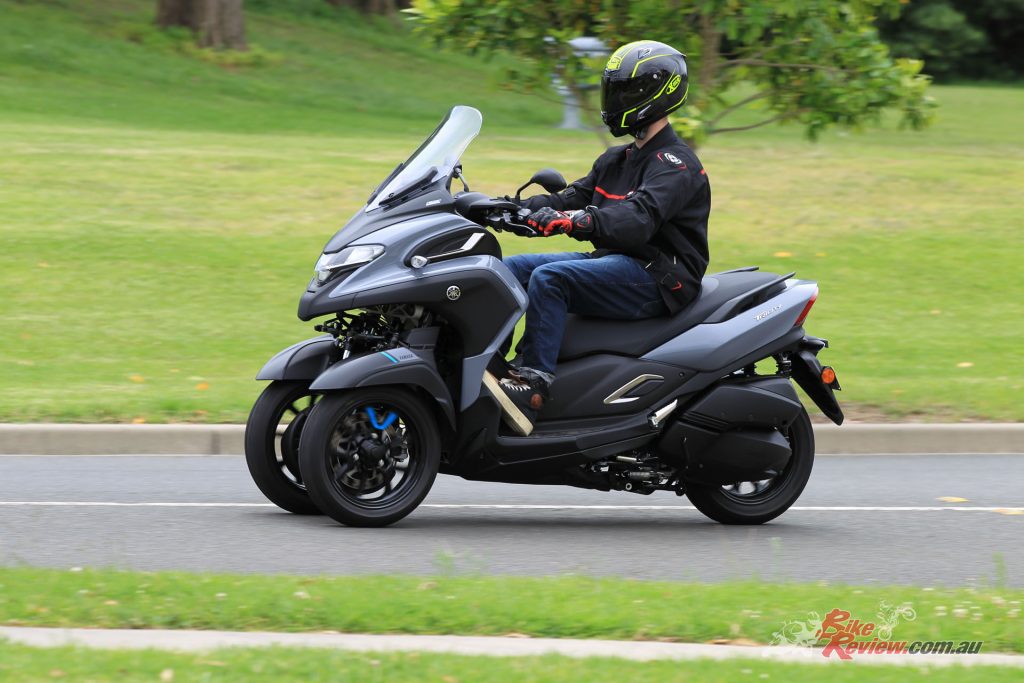
Even with my feet in the relaxed position, they were still bent at almost 90 degrees. Legroom is quite tight.
The under-seat storage is terrific, it’s a feature I wish could be added to modern day motorcycles. Yamaha claim that you can fit two full sized helmets in the massive 43.5L under-seat storage. The Tricity is missing the little side pockets just below the handlebars that the TMAX and the XMAX have, which means the only place you have to place the key is in your pocket or under the seat.
When it comes to the electronics, it is pretty basic. A black and white LCD screen for your instrument panel hosts nothing more than the usual speedo, rev counter, trip counter and clock. The keyless system does work well and will start beeping at you if you’ve left the seat open with the ignition on, which could become annoying while packing your groceries away. There is a small DC port to charge your phone while you’re riding but if you will need to buy a phone mount as there’s nowhere to put it.
The LED light setup around the bike gives a futuristic look to the already unique scooter. The pointy nose of the Tricity meant the wind noise was less intense from the tall windshield, but my head did still pop out above it causing a bit of noise in my helmet.
The Blue-Core engine doesn’t rev too hard and has plenty of torque to get you off the lights quickly with no issues…
The Tricity 300 is powered by a Blue-Core 292cc liquid cooled, single piston engine that is the same setup used in the Yamaha XMAX 300. Both feel identical to ride with the 292cc engine being a more than capable setup for the long and straight Australian roads. The V-belt automatic transmission works well in conjunction with the 292cc, it doesn’t rev too hard and has plenty of torque to get you off the lights quickly with no issues. This comes down to the 12-hole injector that has been added, has an “optimised spray angle that increases combustion efficiency for strong low to mid-range torque.”
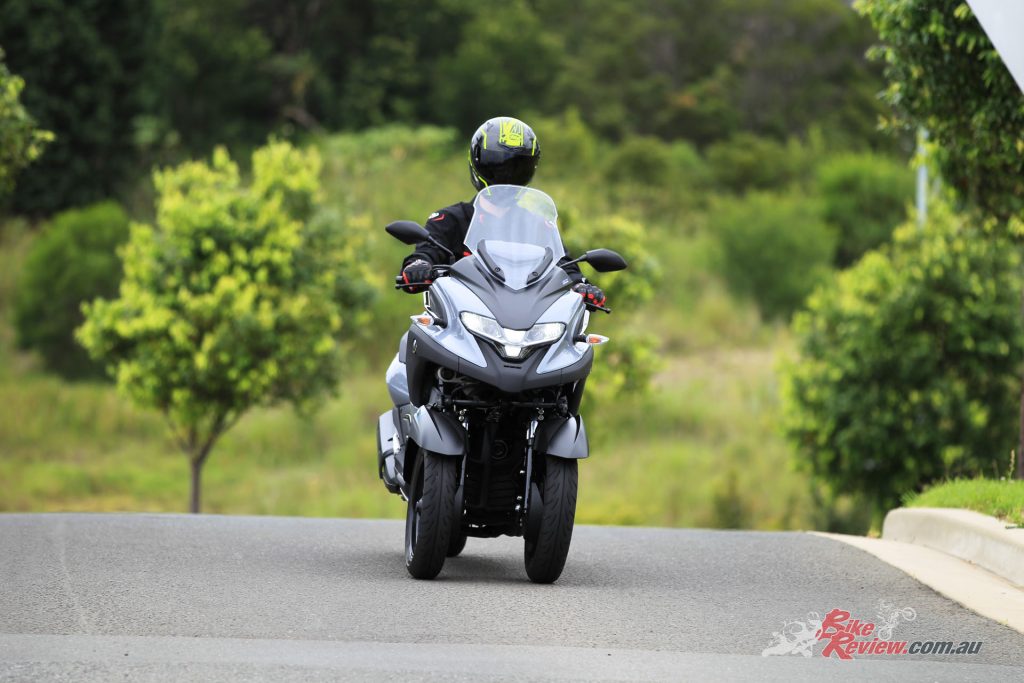
The 292cc engine has more than enough pep in its step to get you off the line quickly and around the suburbs…
Yamaha have duplicated the semi-dry sump setup on their Yamaha YZ motocross range in order to reduce horsepower losses and a one-piece forged crankshaft for reliability purposes. Included is a DiASil offset cylinder with a forged piston, the internal specs of the engine sound like a race bike. These qualities allow the Tricity to make a respectable 20.6kW@7,250rpm and 29Nm@5750rpm.
Tricity to make a respectable 20.6kW@7,250rpm and 29Nm@5750rpm…
When comparing it to the XMAX there is an extra brake. The front wheels use a 267mm disc setup on each side, which require a more intense squeeze on the lever than other bikes. I feel like the Tricity could possibly use a brake upgrade as it is quite a weighty machine, but at no point did I feel like I was going to not be able to stop.
The rear also uses a 267mm single disc setup that feels perfect for the rear. The Tricity uses Yamaha’s Unified Braking System that applies all the brakes when using the rear brake. This coupled with the ABS works well, especially with emergency stopping preventing the bike from locking up. Adding more security to ride is a traction control setup, even on loose gravel and on rainy days it remained assertive, in control and didn’t let me put too much power down.
Overall, the Tricity 300 is an enjoyable scooter to ride but I can’t really see the benefit of the extra front wheel. On another note, that extra wheel did help my girlfriend, who is normally fearful of being a pillion, to feel a lot more comfortable jumping on the back. So, it is not all bad news after all.
It will be interesting to see where Yamaha goes in developing the three-wheeled technology further as well as if other brands will follow suit.
The 2020 Yamaha Tricity is available now for a ride away price of $12,299, which is definitely on the high side of the 300cc scooter market with its lack of tech gadgets. You only have a choice of Nimbus Grey and it has 24 months Unlimited KM warranty. Find a Yamaha dealership here…
2020 Yamaha Tricity 300
Price: $12,299 Ride Away
Colours: Nimbus Grey
Warranty: Two-years unlimited km
Claimed Fuel Consumption: 3.3L/100km
Claimed Power: 20.2Kw@7250rpm
Claimed Torque: 29Nm@5750rpm
Wet Weight: 237kg
Fuel capacity: 13L
Engine: Liquid-cooled Blue-Core SOHC single-cylinder, 292cc, 70 x 75.9mm bore x stroke, 10.9:1 compression ratio, single exhaust.
Gearbox: V-belt Automatic, dry centrifugal shoe clutch.
Chassis: Underbone, steel.
Caster: 20° Trail: 68mm
Suspension: Ackerman front, twin telescopic forks with 100mm of travel. Unit swing with 84mm of travel at the rear.
Brakes: 267mm Single discs on each front wheel with ABS (f), 257mm single disc (r), ABS
Tyres:90/80 – 14in (f), 140/70 – 14in (r), Bridgestone
DIMENSIONS
Wheelbase: 1595mm
Seat height: 795mm
Ground clearance: 130mm
Overall Length: 2250mm
Overall Width: 815mm
Overall Height: 1490mm
Instruments and Tech: LED-lighting, LCD dash, keyless start and DC port.
The Verdict | Review: 2020 Yamaha Tricity 300
Intriguing


